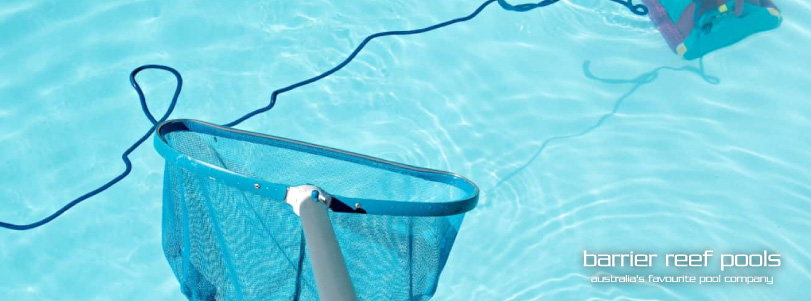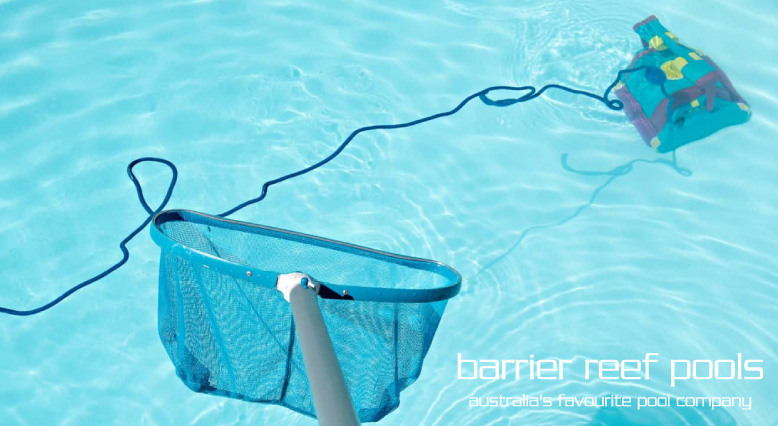A Guide To Swimming Pool Tile Cleaning And Maintenance
Everyone loves a refreshing dip in their backyard swimming pool. It can serve as a peaceful oasis where you can unwind. It can also be the place where your friends can gather around when you have barbeque parties. If you have kids, the pool area can serve as a good place for them to swim around or play. This makes it important to keep the pool area spotless all year round.

Every pool owner is aware of how crucial it is to clean and maintain their swimming pool but seldom do people give the same importance to cleaning their pool tiles. Improper maintenance and cleaning of tiles can manifest in several ways. Sometimes the tiles may feel slimy when you touch them, or they may feel sandy and rough. If you encounter these issues, it means it is time to give a thorough cleaning to your tiles.
Build-ups that can plague your swimming pool tiles
There are numerous reasons why cleaning your pool tile may be necessary. The different types of build-up on your tiles include:
Algae
The build-up of algae is often due to inadequate pool upkeep, a broken filtering system, low levels of chlorine, ineffective water circulation, and heat. It can also be brought on by the rain or wind. If your pool filtration system is broken, check out this guide into upgrading it!
Scale, dirt, grime, and grease
This is caused by sunscreen, body oils, leaves, and organic matter.
Calcium build-up
This is caused by hard water, high levels of pH, or an alkalinity imbalance. The calcium build-up usually happens in two forms, namely the build-up of calcium carbonate and the build-up of calcium silicate.
See three amazing fibreglass pool designs you should look into!
Calcium Silicate: These are dark grey in colour, and they do not flake or react with muriatic acid. Once they have adhered to your swimming pool tiles, they are more difficult to remove.
Calcium Silicate: These are dark grey in colour, and they do not flake or react with muriatic acid. Once they have adhered to your swimming pool tiles, they are more difficult to remove.
Calcium Carbonate: These are often flaky and white, and when muriatic acid is applied, they bubble up. They are extremely difficult to clean off.
Calcium Carbonate: These are often flaky and white, and when muriatic acid is applied, they bubble up. They are extremely difficult to clean off.
Tips to clean and maintain your swimming pool tiles
The swimming pool tiles can be cleaned in numerous ways, irrespective of the scale or build-up they have, by following some simple tips.
Gather the proper materials and equipment
Cleaning the swimming pool and the pool tiles requires some materials and equipment. These include:
Materials
- Melamine sponge
- Baking soda
- Specialised tile cleaner
- Dishwashing liquid
- White vinegar
- Cleaning vinegar
Equipment
- Plastic bucket
- Rubber gloves
- Eye protection
- Stiff-bristled brush
- Soft-bristled brush
- Pumice stone
- Pool vacuum
- Skimmer net
After gathering the materials and equipment, make sure to start with mild tile cleaning techniques. In some cases, you may be able to clean all the dirt or buildup off the tile without having to resort to complicated or advanced cleaning techniques.

Remove the organic contaminants
Regardless of how often you clean your pool, it is necessary to remove all the floating leaves, pollen clumps, and other debris from the pool surface before you begin cleaning the pool tiles. You can easily remove fallen leaves, grass clippings, plastic, and pollen clumps using a long-handled net skimmer. This is also a cost-effective option for removing floating debris from the swimming pool. You can also use pool vacuums to make the cleaning process easier. Robotic cleaners are also available now, which makes the cleaning process easier and more efficient. The downside is that they are very expensive.
Lower the pool water level
Remove water from the swimming pool until it is slightly above the tile line. Doing this will enable you to effectively scrub, brush, and treat the tile with a cleaning agent. This will also allow you to access the tile without having to splash water all around the place by making it visible. You can clean the pool tiles from either the deck or by standing inside the swimming pool, whichever you feel comfortable with.
Scrub your tiles
After lowering the waterline, start cleaning the swimming pool tiles with the help of a stiff-bristled brush to remove the mineral buildup. Make sure to brush the tiles in a three-foot-wide circular motion. Using a soft-bristled brush is recommended by professional pool cleaners to reduce the possibility of scratching the tiles made of glass. For difficult-to-reach spots that are too small for the huge brushes, choose an old toothbrush.
Use cleaners
Consider using a homemade tile cleaner for minimal dirt, grime, or scale. There are several substances that work as good cleaning agents when used in combination. These include:
- Vinegar and water
- Vinegar and baking soda
- Dishwashing liquid and water
- Toothpaste

Once you have decided on the cleaner, start cleaning the tiles with a toothbrush. A calcium releaser can be used to get rid of calcium deposits.
Muriatic acid can also be used as a homemade cleaning agent. Combine muriatic acid and water and pour the mixture into a spray bottle. While mixing, you should pour the acid slowly into the water. However, this method is not advised for beginners because handling muriatic acid is a bit dangerous. After cleaning one section, thoroughly rinse it with water before moving on to the next.
Pressure wash
This is also an efficient method to clean your pool tiles. Drain your pool and protect delicate pool equipment like filtering systems and underwater lights before you start the cleaning process. It is also advisable to keep the pressure value low. If you have any doubts about the pressure, clean a small portion and assess the ability of the tile to withstand the pressure of the washer. You should also wear protective gear while doing pressure washing.
Use pumice stones
Try using a pumice stone if the cleaning agents and scrubbers are unable to clean the dirt or mineral buildup. Since the pumice stone is composed of pulverised volcanic rock, it will effectively break up the deposits.
To avoid excessive scratching, make sure to work carefully and in circular motions while keeping the pool tiles and stone damp.
We bust the most common swimming pool maintenance myths in this article!
In Conclusion
Cleaning the swimming pool tiles is necessary to keep your pool healthy, clear, and sparkling. You can easily clean the tiles by yourself, and in the case of persistent deposits, you can take the help of a professional pool cleaner. Cleaning your pool tiles regularly will also ensure their longevity.
A Guide To Swimming Pool Tile Cleaning And Maintenance
Everyone loves a refreshing dip in their backyard swimming pool. It can serve as a peaceful oasis where you can unwind. It can also be the place where your friends can gather around when you have barbeque parties. If you have kids, the pool area can serve as a good place for them to swim around or play. This makes it important to keep the pool area spotless all year round.

Every pool owner is aware of how crucial it is to clean and maintain their swimming pool but seldom do people give the same importance to cleaning their pool tiles. Improper maintenance and cleaning of tiles can manifest in several ways. Sometimes the tiles may feel slimy when you touch them, or they may feel sandy and rough. If you encounter these issues, it means it is time to give a thorough cleaning to your tiles.
Build-ups that can plague your swimming pool tiles
There are numerous reasons why cleaning your pool tile may be necessary. The different types of build-up on your tiles include:
Algae
The build-up of algae is often due to inadequate pool upkeep, a broken filtering system, low levels of chlorine, ineffective water circulation, and heat. It can also be brought on by the rain or wind. If your pool filtration system is broken, check out this guide into upgrading it!
Scale, dirt, grime, and grease
This is caused by sunscreen, body oils, leaves, and organic matter.
Calcium build-up
This is caused by hard water, high levels of pH, or an alkalinity imbalance. The calcium build-up usually happens in two forms, namely the build-up of calcium carbonate and the build-up of calcium silicate.
See three amazing fibreglass pool designs you should look into!
Calcium Silicate: These are dark grey in colour, and they do not flake or react with muriatic acid. Once they have adhered to your swimming pool tiles, they are more difficult to remove.
Calcium Silicate: These are dark grey in colour, and they do not flake or react with muriatic acid. Once they have adhered to your swimming pool tiles, they are more difficult to remove.
Calcium Carbonate: These are often flaky and white, and when muriatic acid is applied, they bubble up. They are extremely difficult to clean off.
Calcium Carbonate: These are often flaky and white, and when muriatic acid is applied, they bubble up. They are extremely difficult to clean off.
Tips to clean and maintain your swimming pool tiles
The swimming pool tiles can be cleaned in numerous ways, irrespective of the scale or build-up they have, by following some simple tips.
Gather the proper materials and equipment
Cleaning the swimming pool and the pool tiles requires some materials and equipment. These include:
Materials
- Melamine sponge
- Baking soda
- Specialised tile cleaner
- Dishwashing liquid
- White vinegar
- Cleaning vinegar
Equipment
- Plastic bucket
- Rubber gloves
- Eye protection
- Stiff-bristled brush
- Soft-bristled brush
- Pumice stone
- Pool vacuum
- Skimmer net
After gathering the materials and equipment, make sure to start with mild tile cleaning techniques. In some cases, you may be able to clean all the dirt or buildup off the tile without having to resort to complicated or advanced cleaning techniques.

Remove the organic contaminants
Regardless of how often you clean your pool, it is necessary to remove all the floating leaves, pollen clumps, and other debris from the pool surface before you begin cleaning the pool tiles. You can easily remove fallen leaves, grass clippings, plastic, and pollen clumps using a long-handled net skimmer. This is also a cost-effective option for removing floating debris from the swimming pool. You can also use pool vacuums to make the cleaning process easier. Robotic cleaners are also available now, which makes the cleaning process easier and more efficient. The downside is that they are very expensive.
Lower the pool water level
Remove water from the swimming pool until it is slightly above the tile line. Doing this will enable you to effectively scrub, brush, and treat the tile with a cleaning agent. This will also allow you to access the tile without having to splash water all around the place by making it visible. You can clean the pool tiles from either the deck or by standing inside the swimming pool, whichever you feel comfortable with.
Scrub your tiles
After lowering the waterline, start cleaning the swimming pool tiles with the help of a stiff-bristled brush to remove the mineral buildup. Make sure to brush the tiles in a three-foot-wide circular motion. Using a soft-bristled brush is recommended by professional pool cleaners to reduce the possibility of scratching the tiles made of glass. For difficult-to-reach spots that are too small for the huge brushes, choose an old toothbrush.
Use cleaners
Consider using a homemade tile cleaner for minimal dirt, grime, or scale. There are several substances that work as good cleaning agents when used in combination. These include:
- Vinegar and water
- Vinegar and baking soda
- Dishwashing liquid and water
- Toothpaste

Once you have decided on the cleaner, start cleaning the tiles with a toothbrush. A calcium releaser can be used to get rid of calcium deposits.
Muriatic acid can also be used as a homemade cleaning agent. Combine muriatic acid and water and pour the mixture into a spray bottle. While mixing, you should pour the acid slowly into the water. However, this method is not advised for beginners because handling muriatic acid is a bit dangerous. After cleaning one section, thoroughly rinse it with water before moving on to the next.
Pressure wash
This is also an efficient method to clean your pool tiles. Drain your pool and protect delicate pool equipment like filtering systems and underwater lights before you start the cleaning process. It is also advisable to keep the pressure value low. If you have any doubts about the pressure, clean a small portion and assess the ability of the tile to withstand the pressure of the washer. You should also wear protective gear while doing pressure washing.
Use pumice stones
Try using a pumice stone if the cleaning agents and scrubbers are unable to clean the dirt or mineral buildup. Since the pumice stone is composed of pulverised volcanic rock, it will effectively break up the deposits.
To avoid excessive scratching, make sure to work carefully and in circular motions while keeping the pool tiles and stone damp.
We bust the most common swimming pool maintenance myths in this article!
In Conclusion
Cleaning the swimming pool tiles is necessary to keep your pool healthy, clear, and sparkling. You can easily clean the tiles by yourself, and in the case of persistent deposits, you can take the help of a professional pool cleaner. Cleaning your pool tiles regularly will also ensure their longevity.
A Guide To Swimming Pool Tile Cleaning And Maintenance
Everyone loves a refreshing dip in their backyard swimming pool. It can serve as a peaceful oasis where you can unwind. It can also be the place where your friends can gather around when you have barbeque parties. If you have kids, the pool area can serve as a good place for them to swim around or play. This makes it important to keep the pool area spotless all year round.

Every pool owner is aware of how crucial it is to clean and maintain their swimming pool but seldom do people give the same importance to cleaning their pool tiles. Improper maintenance and cleaning of tiles can manifest in several ways. Sometimes the tiles may feel slimy when you touch them, or they may feel sandy and rough. If you encounter these issues, it means it is time to give a thorough cleaning to your tiles.
Build-ups that can plague your swimming pool tiles
There are numerous reasons why cleaning your pool tile may be necessary. The different types of build-up on your tiles include:
Algae
The build-up of algae is often due to inadequate pool upkeep, a broken filtering system, low levels of chlorine, ineffective water circulation, and heat. It can also be brought on by the rain or wind. If your pool filtration system is broken, check out this guide into upgrading it!
Scale, dirt, grime, and grease
This is caused by sunscreen, body oils, leaves, and organic matter.
Calcium build-up
This is caused by hard water, high levels of pH, or an alkalinity imbalance. The calcium build-up usually happens in two forms, namely the build-up of calcium carbonate and the build-up of calcium silicate.
See three amazing fibreglass pool designs you should look into!
Calcium Silicate: These are dark grey in colour, and they do not flake or react with muriatic acid. Once they have adhered to your swimming pool tiles, they are more difficult to remove.
Calcium Silicate: These are dark grey in colour, and they do not flake or react with muriatic acid. Once they have adhered to your swimming pool tiles, they are more difficult to remove.
Calcium Carbonate: These are often flaky and white, and when muriatic acid is applied, they bubble up. They are extremely difficult to clean off.
Calcium Carbonate: These are often flaky and white, and when muriatic acid is applied, they bubble up. They are extremely difficult to clean off.
Tips to clean and maintain your swimming pool tiles
The swimming pool tiles can be cleaned in numerous ways, irrespective of the scale or build-up they have, by following some simple tips.
Gather the proper materials and equipment
Cleaning the swimming pool and the pool tiles requires some materials and equipment. These include:
Materials
- Melamine sponge
- Baking soda
- Specialised tile cleaner
- Dishwashing liquid
- White vinegar
- Cleaning vinegar
Equipment
- Plastic bucket
- Rubber gloves
- Eye protection
- Stiff-bristled brush
- Soft-bristled brush
- Pumice stone
- Pool vacuum
- Skimmer net
After gathering the materials and equipment, make sure to start with mild tile cleaning techniques. In some cases, you may be able to clean all the dirt or buildup off the tile without having to resort to complicated or advanced cleaning techniques.

Remove the organic contaminants
Regardless of how often you clean your pool, it is necessary to remove all the floating leaves, pollen clumps, and other debris from the pool surface before you begin cleaning the pool tiles. You can easily remove fallen leaves, grass clippings, plastic, and pollen clumps using a long-handled net skimmer. This is also a cost-effective option for removing floating debris from the swimming pool. You can also use pool vacuums to make the cleaning process easier. Robotic cleaners are also available now, which makes the cleaning process easier and more efficient. The downside is that they are very expensive.
Lower the pool water level
Remove water from the swimming pool until it is slightly above the tile line. Doing this will enable you to effectively scrub, brush, and treat the tile with a cleaning agent. This will also allow you to access the tile without having to splash water all around the place by making it visible. You can clean the pool tiles from either the deck or by standing inside the swimming pool, whichever you feel comfortable with.
Scrub your tiles
After lowering the waterline, start cleaning the swimming pool tiles with the help of a stiff-bristled brush to remove the mineral buildup. Make sure to brush the tiles in a three-foot-wide circular motion. Using a soft-bristled brush is recommended by professional pool cleaners to reduce the possibility of scratching the tiles made of glass. For difficult-to-reach spots that are too small for the huge brushes, choose an old toothbrush.
Use cleaners
Consider using a homemade tile cleaner for minimal dirt, grime, or scale. There are several substances that work as good cleaning agents when used in combination. These include:
- Vinegar and water
- Vinegar and baking soda
- Dishwashing liquid and water
- Toothpaste

Once you have decided on the cleaner, start cleaning the tiles with a toothbrush. A calcium releaser can be used to get rid of calcium deposits.
Muriatic acid can also be used as a homemade cleaning agent. Combine muriatic acid and water and pour the mixture into a spray bottle. While mixing, you should pour the acid slowly into the water. However, this method is not advised for beginners because handling muriatic acid is a bit dangerous. After cleaning one section, thoroughly rinse it with water before moving on to the next.
Pressure wash
This is also an efficient method to clean your pool tiles. Drain your pool and protect delicate pool equipment like filtering systems and underwater lights before you start the cleaning process. It is also advisable to keep the pressure value low. If you have any doubts about the pressure, clean a small portion and assess the ability of the tile to withstand the pressure of the washer. You should also wear protective gear while doing pressure washing.
Use pumice stones
Try using a pumice stone if the cleaning agents and scrubbers are unable to clean the dirt or mineral buildup. Since the pumice stone is composed of pulverised volcanic rock, it will effectively break up the deposits.
To avoid excessive scratching, make sure to work carefully and in circular motions while keeping the pool tiles and stone damp.
We bust the most common swimming pool maintenance myths in this article!
In Conclusion
Cleaning the swimming pool tiles is necessary to keep your pool healthy, clear, and sparkling. You can easily clean the tiles by yourself, and in the case of persistent deposits, you can take the help of a professional pool cleaner. Cleaning your pool tiles regularly will also ensure their longevity.

